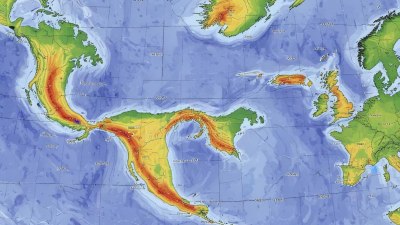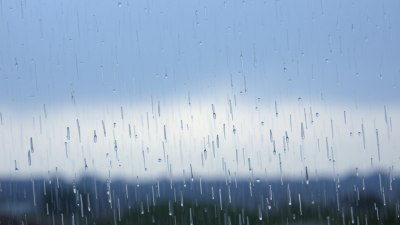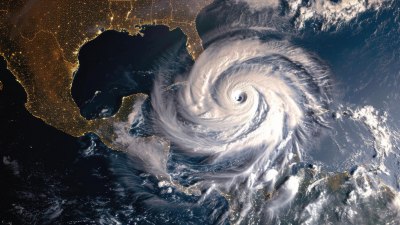How to Read a Weather Map
Learn the essential skills to accurately interpret weather maps and forecasts.

This image was created with the assistance of Freepik
Reading a weather map is an essential skill for anyone interested in understanding the weather. By learning to read these maps effectively, you can gain insights into upcoming weather conditions, such as storms, precipitation, and temperature changes. This guide will walk you through the basics of interpreting weather maps, helping you become more informed about the climate in your area. Whether you're planning a trip or just want to stay prepared, knowing how to read a weather map can be invaluable.
Understanding Weather Map Symbols
The first step in reading a weather map is familiarizing yourself with the symbols used to represent different weather phenomena. Weather maps often include a variety of symbols that indicate temperature, types of precipitation, pressure systems, and fronts. For instance, a sun symbol typically indicates clear weather, while a cloud symbol indicates overcast conditions. Rain, snow, and storms are all represented by specific symbols, with raindrops or snowflakes indicating precipitation.
Additionally, you'll find lines that indicate fronts on a weather map. A cold front is represented by a blue line with triangles pointing in the direction of the front's movement, while a warm front is shown as a red line with semicircles. Understanding these symbols is crucial for interpreting the data presented in the map.
Analyzing Temperature Readings
Next, you need to understand the temperature readings presented on the weather map. Typically, weather maps display temperatures for various regions using numerical values and colors. These numbers indicate the current temperature in degrees Celsius or Fahrenheit, usually placed in circles on the map.
Colors are often used to visually represent temperature ranges; for example, blue shades may indicate cooler temperatures, while red shades signify warmer conditions. By observing the temperature readings, you can identify warm and cold areas on the map and predict how temperatures might change over the day or week.
Interpreting Pressure Systems
One of the key aspects of weather maps is understanding pressure systems, which significantly influence weather conditions. High-pressure systems are generally associated with fair weather, clear skies, and light winds. On a weather map, high-pressure systems are indicated by an 'H' and are usually surrounded by isobars, which are lines connecting points of equal atmospheric pressure.
Conversely, low-pressure systems, represented by 'L', often indicate stormy weather with increased cloud cover and precipitation. The closer the isobars are to one another, the stronger the wind will be. Recognizing these systems can help you predict changes in the weather, such as incoming storms or prolonged periods of clear conditions.
Identifying Fronts
Fronts play a crucial role in weather changes and are a vital component of any weather map. A front is defined as the boundary between two air masses with different temperatures and humidity levels. As mentioned earlier, cold fronts and warm fronts are represented by distinct lines featuring triangles and semicircles, respectively.
Cold fronts advance and often bring a quick drop in temperature, along with gusty winds and stormy weather. As the cold front moves, it lifts warm air ahead of it, which can lead to thunderstorms. Warm fronts, however, typically result in gradual temperature increases and prolonged periods of precipitation. Recognizing the type of front on a weather map can help you anticipate weather changes accurately.
Recognizing Precipitation Areas
Weather maps also indicate areas of current precipitation and forecast precipitation. Areas experiencing rain are often shaded in blue or marked with rain symbols, while snow precipitation is frequently represented by snowflake symbols. By analyzing these areas, you can determine where precipitation is occurring and how extensive it might be.
Maps may also include areas forecasted to receive precipitation in the coming days, allowing you to plan accordingly. It's essential to pay attention to these areas if you have outdoor plans or need to prepare for potential weather impacts.
Using Satellite and Radar Imagery
In addition to standard weather maps, satellite and radar imagery can provide valuable information about current weather conditions. Satellite images offer a view of cloud formations and large weather systems, helping you visualize how weather patterns evolve. Radar images can show precipitation intensity and movement, providing real-time data about storms and rainfall.
By comparing these images with traditional weather maps, you can gain a comprehensive understanding of the weather in your area. This combination of tools is particularly useful during severe weather events when conditions can change rapidly.
Local vs. National Weather Maps
When reading weather maps, it's important to differentiate between local and national maps. Local maps focus on a smaller geographic area and provide detailed information, while national maps cover a broader region and can show larger trends and systems.
For specific forecasts, consult local weather maps that highlight conditions in your immediate area. National weather maps can help broaden your perspective on how regional systems might influence your local weather.
Using Weather Apps and Websites
In today's digital age, numerous weather apps and websites provide interactive weather maps that can enhance your understanding of current conditions. These platforms often employ advanced technology to deliver real-time data and forecasts. Using mobile apps allows you to access weather maps from anywhere, making it easy to stay informed.
Be sure to explore different weather apps to find one that suits your needs, as some may offer features like customizable alerts for severe weather or detailed radar images. Having access to this information at your fingertips can help you make informed decisions about your activities and plans.
Practical Tips for Using Weather Maps
To maximize your ability to read weather maps, consider these practical tips:
- Get familiar with weather symbols and their meanings.
- Pay attention to temperature gradients and pressure systems.
- Always check multiple sources for the most accurate information.
- Compare weather maps over time to identify trends.
- Use local maps for specific forecasts and national maps for broader insights.
By applying these tips, you'll become more seasoned in interpreting weather maps, allowing you to predict weather patterns and stay prepared.
Embracing Weather Literacy
Understanding how to read a weather map is a valuable skill that empowers you to make informed decisions. From planning outdoor activities to preparing for severe weather, being weather-wise goes a long way in ensuring safety and enjoyment. By familiarizing yourself with symbols, temperature readings, pressure systems, and precipitation areas, you’ll develop the confidence to assess weather conditions accurately.
As you continue to explore the forecast, remember that regular practice will enhance your skills. Check weather maps regularly and pay attention to changing conditions to stay informed. Inhale deeply, take a moment to appreciate the marvels of weather forecasting, and embrace the knowledge that you are equipped to navigate the elements with confidence.











